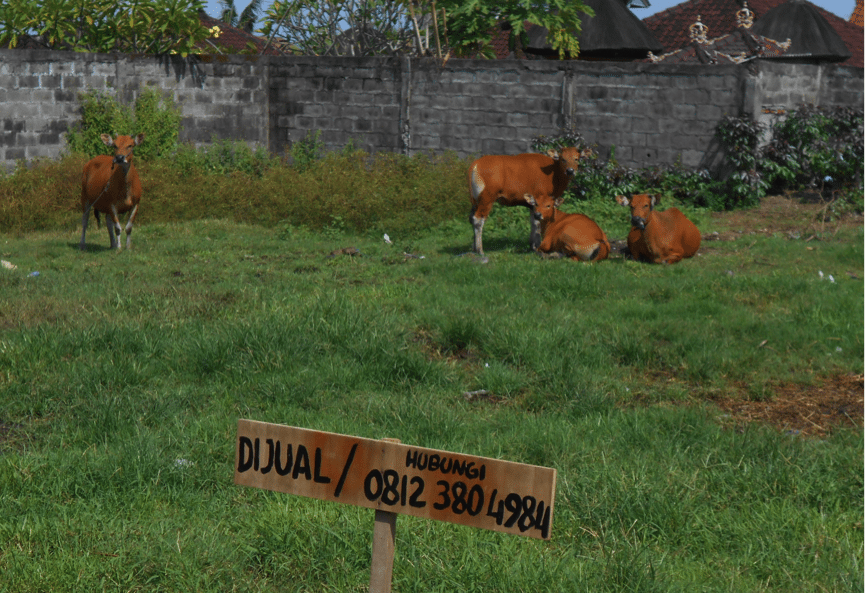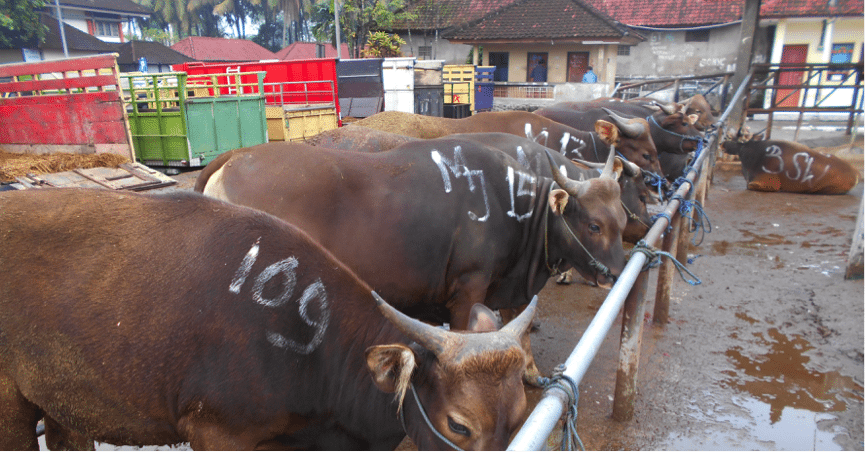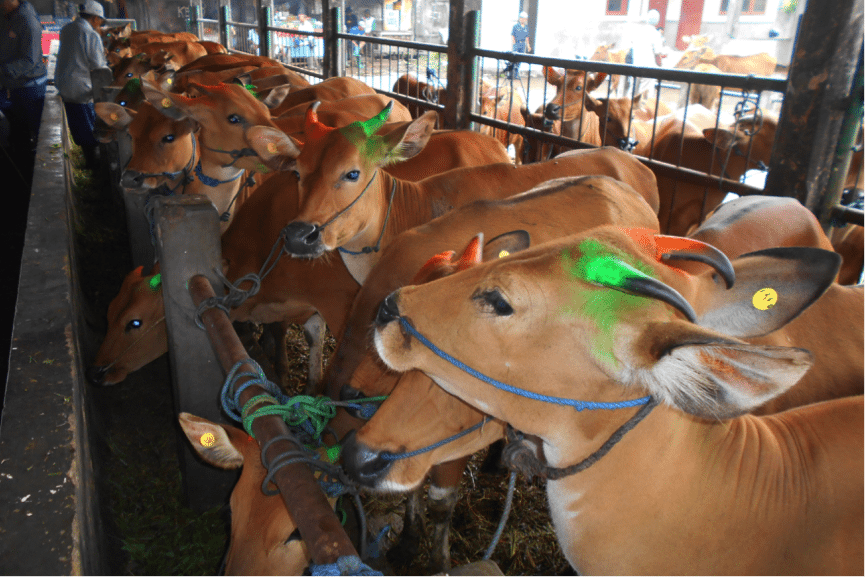When I travelled back to Australia in early May to visit Beef 2015 in Rockhampton, I stopped in Bali to visit my friend and live export identity David Heath.
On Sunday morning he took me to the Beringkit cattle market which is about an hour’s drive to the north west of Denpasar. Bali’s cattle herd is shrinking fast with current estimates at around 600,000 head.
A combination of mechanisation and urbanisation are making Bali cattle redundant as draft animals at the same time as their grazing areas are being converted to more profitable uses. This situation in Bali is an extreme example of what is happening all over Asia. Land is becoming too valuable to graze cattle and mechanisation is providing farmers with the opportunity to cash in by selling their cattle and buffalo into the highly lucrative local slaughter markets.
The photo below is of four young Bali cows tethered on a “house block” of land in the very fashionable suburb of Seminyak. Dicky Adiwoso has just built a beautiful new villa about 100 metres from the site of the photo below so he rang the number on the DIJUAL (for sale) sign and was told that the land was 6 “are” (pronounced ara). One “are” is the local equivalent to 100 square metres. The asking price for this 600 square metre block was AUD $720,000! What chance is there that the owner will keep this land for grazing his cows when the parcel is potentially worth that much?
The Beringkit market sells slaughter cattle two days a week and breeders on Sunday. Below is a photo of some Bali bulls left over from the previous slaughter sale waiting to be trucked. Most of the slaughter cattle sold here are sent to Java with the liveweight price in the sale yard at around Rp38,000 per kg or A$3.80. Accurate numbers are hard to determine but the flow of slaughter cattle from Bali to Java could be as low as 10,000 per annum. Slaughter buffalo were also a common site at this market in the past but very few are seen anywhere in Bali these days.
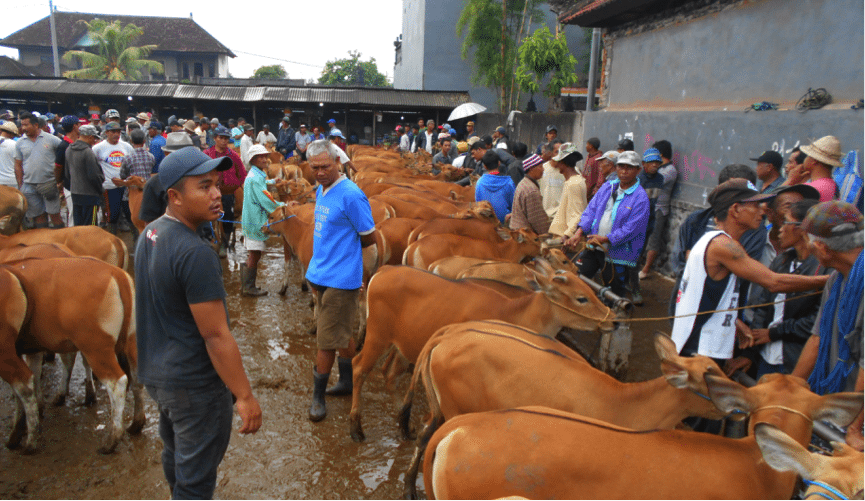
Local farmers buying and selling Bali cattle weaners at the Beringkit market. Young stock are sold per head and were fetching Rp8-9 million (AUD$800-900)
Bali cattle, arguably the most beautiful of all breeds of cattle, are an entirely separate species, Bos javanicus. They have many visual and behavioural qualities in common with deer. Because they have not been domesticated for as long as most other cattle breeds, they need to be kept under constant control through the use of their nose ropes or they will “forget” their education and return to a partially wild state and need some further training before they become domesticated once again.
Bali cattle are exceptionally fertile with calving rates of 90pc easily achievable even while they are feeding last year’s weaner. The trade off is that calves are born with a body weight of around 15kg and growth rates are very low.
Across the whole Asian region the same story is being played out where draft cattle and buffalo are being displaced by machinery and small holder beef cattle enterprises are finding more lucrative opportunities for the time and effort they previously allocated to their cattle. Even in Indonesia, where the back-yard cow acted as a savings account and insurance policy, farmers are opting to switch to motorbikes and other hardware that make life easier and remove the need to bend their weary backs for 2 hours every evening cutting grass for their cows.
Myanmar is the only country in the region that is not following this trend. Government policies banning exports of live cattle, active disputes along all of the rebel-controlled borders and a very weak economy ensure that the draft cattle and buffalo are still the main source of agricultural pulling power. Low average incomes and a high proportion of Buddhists means that domestic beef consumption is minimal. Given that restrictive government policies and ethnic disputes are unlikely to be resolved in the near future, Australia remains the only source of large numbers of suitable live cattle in the entire Asian region.
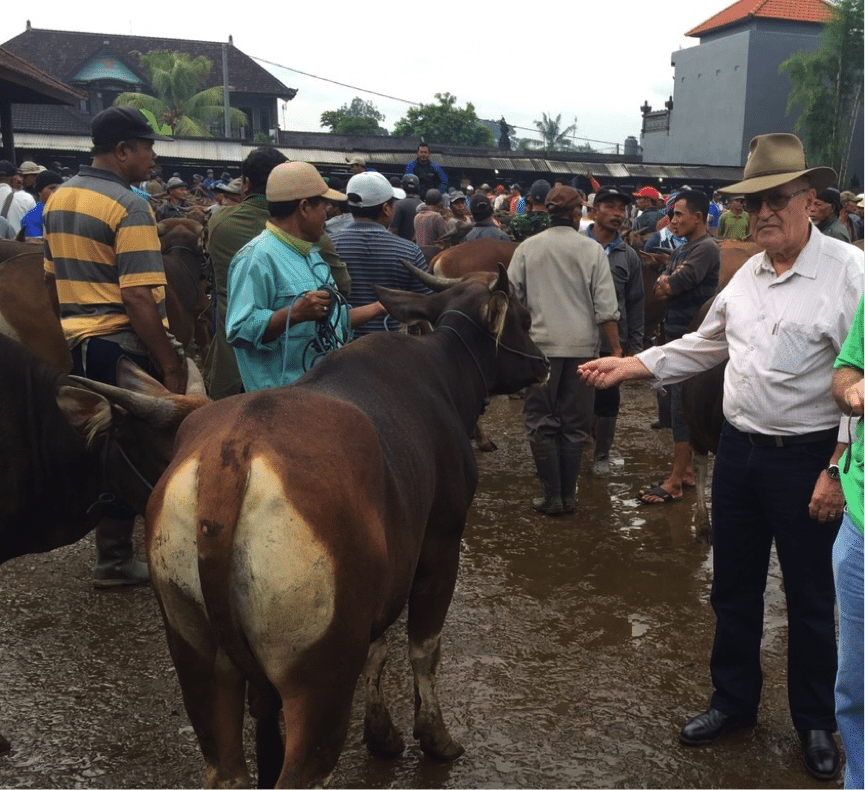
David Heath with a Bali bull that was sold twice in less than one hour while we watched the trading action.
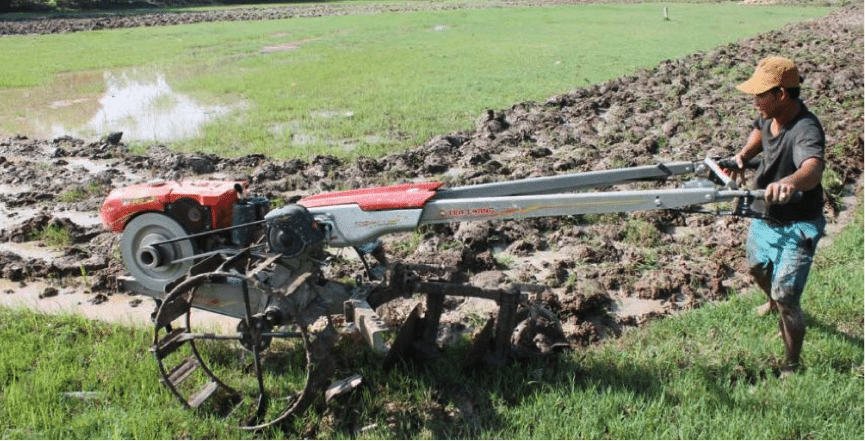
These incredibly efficient hand tractors make life easy for farmers rendering draft cattle and buffalo largely redundant.
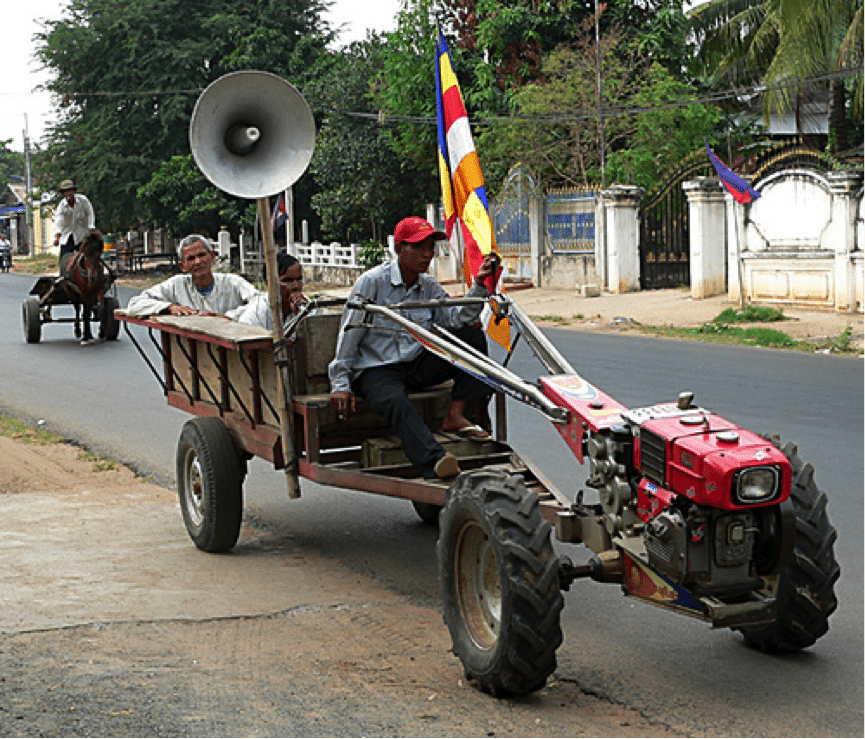
By changing the paddles for rubber tyres and dropping off the plough blades this machine can be quickly converted into a road tractor/trailer that very efficiently displaces the draft cow or buffalo. And you don’t have to spend 2 hours every night cutting grass for it!
Dr Ross Ainsworth’s South East Asian reports are first published exclusively on Beef Central. To view more of Dr Ross Ainsworth’s previous Beef Central articles click here. To visit his personal South East Asia report blog site, click here.


